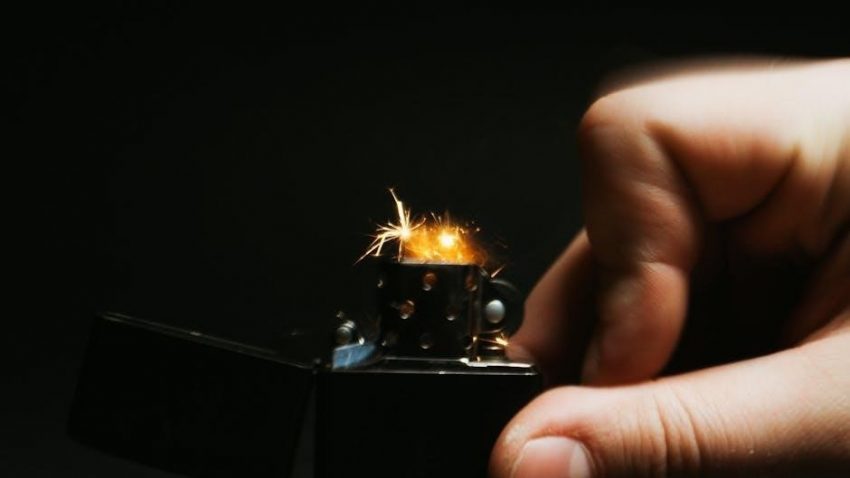Welcome to the Honeywell Heat Pump Thermostat manual. These advanced thermostats are designed to optimize your heating and cooling systems for maximum efficiency and comfort;
With features like smart fan operation, BACnet compatibility, and occupancy-based programming, Honeywell thermostats offer seamless control over your heat pump system, ensuring energy savings and optimal performance.
Whether you’re installing a new thermostat or upgrading, this guide provides comprehensive instructions to help you get the most out of your Honeywell Heat Pump Thermostat.
Overview of Honeywell Heat Pump Thermostats
Honeywell Heat Pump Thermostats are advanced devices designed to optimize heating and cooling systems for maximum efficiency and comfort. These thermostats feature smart fan operation, BACnet compatibility, and occupancy-based programming, ensuring precise temperature control. With a user-friendly interface, they allow seamless adjustments to system settings, including heating, cooling, and fan modes. Honeywell thermostats also offer energy-saving features like non-volatile memory and smart energy reports, helping users reduce energy consumption. Whether installed in residential or commercial settings, these thermostats provide reliable performance and adaptability to various heat pump configurations.
Importance of the Manual for Installation and Operation
The manual is essential for proper installation and operation of your Honeywell Heat Pump Thermostat. It provides detailed instructions to ensure safe and efficient setup, preventing potential system damage. By following the manual, users can unlock all features, including smart fan operation and energy-saving modes. The guide also covers troubleshooting common issues, helping users maintain optimal performance. Reading the manual thoroughly guarantees compliance with warranty terms and ensures the thermostat functions as intended, maximizing comfort and energy efficiency in your home or business.

Installation Requirements and Precautions
Disconnect power before installation to ensure safety. Mount the thermostat 5 feet above the floor for accurate temperature sensing and proper air circulation. Follow manual instructions carefully.
Pre-Installation Checklist
- Verify compatibility of the Honeywell Heat Pump Thermostat with your HVAC system to ensure proper functionality.
- Gather all necessary tools and materials, including wires, screws, and the wallplate.
- Disconnect power to the heating and cooling system before starting the installation process.
- Review the wiring diagram to understand connections and ensure correct setup for heat pump operation.
- Check for any existing wiring issues or damage that may affect thermostat performance.
- Plan the mounting location to ensure accurate temperature sensing and proper air circulation.
- Read the manual thoroughly to understand installation steps and safety precautions.
Following this checklist ensures a smooth and safe installation process for your Honeywell Heat Pump Thermostat.
Disconnecting Power Before Installation
Before starting the installation, ensure the HVAC system is powered off. Locate and switch off the circuit breaker controlling the system to prevent any accidental start-ups.
Verify the power is off using a voltage tester to confirm there’s no electricity flowing through the wires. This step is crucial for safety and prevents electrical shocks or damage.
Once the power is confirmed off, you can safely disconnect the wires from the old thermostat and proceed with the installation of your Honeywell Heat Pump Thermostat.
Always follow safety guidelines to avoid risks during the process.
Mounting the Thermostat
Mount the Honeywell Heat Pump Thermostat at a height of 5 feet above the floor, ensuring good air circulation. Choose a location away from direct sunlight and drafts to ensure accurate temperature readings.
Use the provided wall anchors and screws to securely attach the mounting plate to the wall. Ensure the plate is level to maintain the thermostat’s functionality and appearance.
Gently snap the thermostat into place on the mounting plate until it clicks, confirming it’s properly secured. This ensures reliable operation and longevity of the device.
Double-check the installation for stability and alignment before proceeding with wiring connections.

Wiring Diagram and Connections
The wiring diagram provides a detailed layout of connections for your Honeywell Heat Pump Thermostat. Ensure all wires are correctly matched to their corresponding terminals for proper functionality.
Refer to the diagram for specific color-coded wire connections, such as the common (C) wire, which is essential for continuous power supply to the thermostat.
Always disconnect power before attempting any wiring connections to avoid electrical hazards. Consult a licensed technician if unsure about any step in the process.
Understanding the Wiring Diagram
The wiring diagram is a visual guide that outlines the connections between your Honeywell Heat Pump Thermostat and your HVAC system. It ensures proper installation and functionality.
Each wire is color-coded or labeled to match specific terminals on the thermostat. For example, the red wire typically connects to the heating stage, while the yellow wire connects to cooling.
Use the diagram to identify the correct terminals for your system, such as the common (C) wire, which provides continuous power to the thermostat. Always disconnect power before starting work to avoid electrical hazards.
Refer to the diagram for alternate wiring configurations, especially for heat pumps, to ensure compatibility and optimal performance. If unsure, consult a licensed technician for assistance.
Connecting the Common Wire
The common wire (C) provides continuous power to the thermostat and is essential for proper operation. Ensure the C wire is connected to the correct terminal on both the thermostat and your HVAC system.
Refer to your wiring diagram to identify the C terminal. If your system lacks a C wire, you may need a power-stealing thermostat or an external power source.
Always disconnect power before connecting the common wire to avoid electrical hazards. Verify compatibility with your heat pump system to ensure accurate temperature control and efficient performance.
Alternate Wiring for Heat Pumps
For heat pumps, alternate wiring ensures proper operation in both heating and cooling modes. Keep the R slider tab in the up position for single-wire setups; If your old thermostat used dual wires, this configuration may still apply. Always follow the wiring diagram to avoid errors. Alternate wiring ensures compatibility with your heat pump system, enabling seamless switching between modes. Proper connection guarantees accurate temperature control and efficient performance. Ensure all wires are securely connected to maintain reliability and safety in your heating and cooling operations.

System Settings and Modes
System settings allow you to customize heating, cooling, and off modes for optimal comfort. Select modes based on your needs to ensure efficient temperature control and energy savings.
Selecting Heating Mode
To activate heating mode, press the SYSTEM button on your Honeywell thermostat until “Heat” is displayed. This mode ensures your heat pump operates to maintain a comfortable temperature during colder months.
The thermostat will regulate your heating system efficiently, optimizing energy use while providing consistent warmth. Ensure your schedule is set to align with your daily needs for maximum energy savings and comfort.
Selecting Cooling Mode
Activate cooling mode by pressing the SYSTEM button until “Cool” appears on the thermostat screen. This mode engages your heat pump to lower the room temperature, providing a refreshing environment.
Your Honeywell thermostat ensures efficient operation, balancing energy consumption with cooling performance. Adjust settings or schedules as needed to maintain optimal comfort during warmer seasons while minimizing energy usage.
System Off Mode
Selecting System Off mode disables both heating and cooling functions, allowing you to turn off your heat pump system completely; This mode is ideal when no climate control is needed, helping to conserve energy.
Activate this mode by pressing the SYSTEM button until “Off” is displayed. Your Honeywell thermostat will stop sending signals to your heat pump, ensuring no energy is used for heating or cooling. Use this mode when leaving home for extended periods to maximize energy efficiency.

Fan Settings and Operation
The Honeywell Heat Pump Thermostat offers advanced fan control, including smart fan operation for automatic adjustments and manual fan control for continuous airflow management.
Smart Fan Operation
Smart Fan Operation automatically adjusts fan speed based on system demand, optimizing airflow for enhanced comfort and energy efficiency. This feature reduces unnecessary energy waste by running the fan only when needed. It works seamlessly with heat pumps, ensuring smooth transitions between heating and cooling modes. Compatible with smart home systems like BACnet and ZigBee, Smart Fan Operation allows for remote control and scheduling via mobile apps. Enable this feature through the thermostat menu for intelligent fan management, minimizing noise and extending equipment lifespan while maintaining consistent air circulation.
Manual Fan Control
Manual Fan Control allows you to adjust fan speed directly, providing flexibility for personalized comfort. This feature enables continuous fan operation or manual speed adjustment, ideal for consistent air circulation or noise reduction. Accessible through the thermostat menu, Manual Fan Control lets you override automatic settings. It complements smart features while offering direct control, ensuring optimal airflow without relying on system demands. Use this mode to customize your environment, balancing energy usage and comfort as needed. This feature is especially useful for maintaining air quality or reducing noise during specific times.
Fan Scheduling
Fan Scheduling allows you to pre-set times for fan operation, optimizing airflow and energy usage. Program the fan to run during specific periods, ensuring consistent air circulation without constant manual adjustments. This feature is ideal for maintaining even temperatures and improving indoor air quality. By scheduling fan operation, you can reduce unnecessary runtime, lowering energy consumption. Customize your fan schedule daily or weekly to match your lifestyle, ensuring comfort while saving energy. Fan Scheduling complements smart fan modes, offering a balance of automation and personalization for your home’s heating and cooling system.

Programming and Scheduling
Programming your Honeywell thermostat allows you to create custom schedules for heating and cooling, optimizing energy use and comfort. Set daily or weekly programs to match your lifestyle, with options for weekday and weekend adjustments. This feature ensures your system runs efficiently, saving energy while maintaining desired temperatures. Easily adjust schedules as needed to accommodate changes in occupancy or preferences, making it simple to balance convenience and energy efficiency year-round.
Setting Up Daily Schedules
Setting up daily schedules on your Honeywell Heat Pump Thermostat allows you to customize temperature settings throughout the day. Use the touchscreen interface to create up to six temperature points, ensuring energy efficiency and comfort. Program wake, leave, return, and sleep times to align with your routine. The thermostat saves these schedules, automatically adjusting temperatures to match your preferences. This feature not only enhances convenience but also optimizes energy use, reducing unnecessary heating or cooling when spaces are unoccupied. Regularly review and update schedules to adapt to changes in your daily life for optimal performance.
Weekday vs. Weekend Programming
Program your Honeywell Heat Pump Thermostat to differentiate between weekdays and weekends for tailored temperature control. Set specific schedules for Monday to Friday, and separate settings for Saturday and Sunday. This flexibility allows you to maintain comfort while optimizing energy use. For example, set a higher temperature when you’re away during weekdays and a cooler setting when you’re home on weekends. The thermostat retains these settings, ensuring consistent operation without manual adjustments. Adjust these programs as needed to match your lifestyle changes for enhanced efficiency and convenience throughout the week.
Occupancy-Based Programming
Occupancy-based programming allows your Honeywell Heat Pump Thermostat to adjust settings based on whether someone is home. This feature uses sensors or manual inputs to detect presence and absence, optimizing temperature control for energy savings. For example, the thermostat can raise or lower the temperature when the house is vacant and restore comfort levels upon return. This intelligent feature ensures minimal energy waste while maintaining comfort, making it ideal for households with predictable routines. Combine it with smart fan operation for enhanced efficiency and tailored climate control.

Energy-Saving Features
Honeywell Heat Pump Thermostats offer advanced energy-saving features, including smart fan operation, non-volatile memory, and smart energy reports, to optimize efficiency and reduce energy consumption effectively.
Energy Efficiency Tips
Maximize energy savings with Honeywell Heat Pump Thermostats by adjusting temperature settings based on occupancy and schedule. Use smart fan operation to circulate air efficiently without constant heating or cooling. Enable non-volatile memory to retain settings during power outages, reducing unnecessary adjustments. Regularly check wiring connections for optimal performance and consider programmable schedules to align with your lifestyle. Additionally, clean the thermostat periodically to maintain accuracy and efficiency. These tips ensure your system runs smoothly while minimizing energy consumption.
Non-Volatile Memory Function
The Honeywell Heat Pump Thermostat features non-volatile memory, ensuring your programmed settings remain intact even during power outages. This function automatically retains temperature schedules, fan settings, and system preferences, eliminating the need to reprogram the thermostat after a power interruption. By maintaining consistent settings, it helps optimize energy efficiency and provides uninterrupted comfort. This reliable feature is particularly useful for maintaining precise temperature control and reducing manual adjustments, ensuring your system operates smoothly and efficiently at all times.
Smart Energy Reports
Honeywell Heat Pump Thermostats offer Smart Energy Reports, providing detailed insights into your energy usage. These reports help you monitor and analyze heating and cooling consumption patterns. By identifying peak usage periods and inefficiencies, you can optimize your settings for better energy savings. The reports are accessible remotely, allowing you to make informed decisions about your system’s operation. This feature not only enhances energy efficiency but also supports eco-friendly practices by reducing unnecessary energy waste. Regular review of these reports ensures your system operates at its best, saving you money and minimizing environmental impact.

Troubleshooting Common Issues
Identify and resolve common issues with your Honeywell Heat Pump Thermostat, such as connectivity problems or temperature inaccuracies. Ensure optimal performance and comfort by addressing these promptly.
Identifying Common Problems
Common issues with Honeywell Heat Pump Thermostats include connectivity problems, inaccurate temperature readings, and fan malfunctions. These problems can often be diagnosed through the thermostat’s display or user interface. Ensure your system is properly powered and all wiring connections are secure. If issues persist, consult the manual for specific error codes and troubleshooting steps. Regular maintenance and software updates can help prevent these problems and ensure optimal performance. Always refer to the manual for detailed guidance on identifying and resolving issues effectively.
Resolving Connectivity Issues
Connectivity problems with Honeywell Heat Pump Thermostats can often be resolved by checking the power supply and ensuring all wires are securely connected. Restart the thermostat and verify network settings if it’s a smart model. For Wi-Fi or smart home integrations, ensure the device is connected to the correct network and signal strength is adequate. If issues persist, reset the thermostat to factory settings or update its software. Refer to the manual for specific troubleshooting steps tailored to your model, and ensure compatibility with smart home systems like BACnet or ZigBee.
Fixing Temperature Accuracy Issues
If your Honeywell Heat Pump Thermostat displays incorrect temperatures, ensure it’s calibrated properly. Check for air circulation issues around the thermostat and verify its mounting height, typically 5 feet above the floor. Clean the device to remove dust that may affect sensors. If the issue persists, reset the thermostat or update its software. Use the manual’s troubleshooting section to guide calibration or sensor checks. Ensure the thermostat is free from drafts and direct sunlight to maintain accurate readings and reliable system operation.

Maintenance and Upkeep
Regular maintenance ensures your Honeywell Heat Pump Thermostat operates efficiently. Clean the device to prevent dust buildup and replace batteries as needed to maintain functionality.
Cleaning the Thermostat
Regularly cleaning your Honeywell Heat Pump Thermostat is essential for maintaining its performance. Start by turning off the power to the thermostat at the circuit breaker. Use a soft, dry cloth to gently wipe down the exterior and screen, removing dust and debris. Avoid using liquids or harsh chemicals, as they may damage the device. For stubborn spots, lightly dampen the cloth with water, but ensure it’s not soaking wet. Do not insert any objects into the thermostat’s openings, as this could cause internal damage. Cleaning helps ensure accurate temperature readings and smooth operation. Perform this maintenance every 2-3 months for optimal functionality.
Replacing Batteries
To ensure uninterrupted operation, replace the batteries in your Honeywell Heat Pump Thermostat when the battery indicator appears. Turn off the power to the thermostat at the circuit breaker before starting. Remove the front cover by gently pulling it away from the wallplate. Take out the old batteries and insert new ones, ensuring they are the correct type (usually AA or AAA alkaline) and properly oriented. Avoid mixing old and new batteries. Replace the cover and restore power. If your model uses a hardwired connection, batteries may not be required. Refer to the manual for specific battery requirements. Proper disposal of old batteries is recommended.
Updating Software
Regular software updates ensure your Honeywell Heat Pump Thermostat operates with the latest features and improvements. To update, connect the thermostat to Wi-Fi and navigate to the settings menu. Select “System” or “About” to check for updates. If an update is available, download and install it. Ensure the thermostat remains powered on throughout the process. Some models may require a USB connection or a mobile app for updates. Follow on-screen instructions carefully to avoid interruptions. Refer to the manual for specific update procedures tailored to your thermostat model. Keeping the software up-to-date enhances performance and compatibility. Always use Honeywell-approved update methods to maintain warranty validity and system integrity.

Advanced Features and Compatibility
Honeywell Heat Pump Thermostats offer advanced features like BACnet and ZigBee compatibility, enabling seamless integration with smart home systems and building management networks for enhanced control and efficiency.
BACnet and ZigBee Compatibility
Honeywell Heat Pump Thermostats are compatible with BACnet and ZigBee protocols, enabling seamless integration with smart home systems and building management networks. These communication protocols allow for remote monitoring, enhanced control, and efficient energy management. With BACnet, the thermostat can connect to commercial building automation systems, while ZigBee ensures compatibility with popular smart home devices. This advanced compatibility simplifies system integration, providing users with a unified and intelligent way to manage their heating and cooling systems for optimal performance and energy efficiency.
Smart Home Integration
Honeywell Heat Pump Thermostats seamlessly integrate with popular smart home systems. This integration allows users to control their thermostat via voice commands through platforms like Amazon Alexa or Google Assistant. Additionally, the thermostat can connect with other smart devices to create automated scenes, enhancing comfort and energy efficiency. With smart home integration, users can adjust settings, receive alerts, and monitor energy usage remotely through compatible apps. This feature ensures a modern, connected experience, making it easier to manage your home’s climate efficiently and conveniently.
Remote Access and Control
Honeywell Heat Pump Thermostats offer remote access and control through compatible apps. Users can adjust settings, monitor energy usage, and receive alerts from their smartphones or tablets. This feature allows for seamless management of your heating and cooling system, even when you’re not home. Geofencing technology can automatically adjust temperatures based on your location, while smart scheduling ensures optimal comfort and efficiency. Remote access also enables real-time system monitoring and control, providing peace of mind and enhanced energy management capabilities. This feature is a key part of modern thermostat convenience and functionality.
Congratulations on completing the setup of your Honeywell Heat Pump Thermostat. Proper installation and programming ensure optimal performance, energy savings, and enhanced comfort. Refer to the manual for troubleshooting and maintenance tips to maximize efficiency and extend the lifespan of your system. Enjoy the convenience and reliability of your advanced thermostat, designed to meet your home’s heating and cooling needs effectively.
Final Tips for Optimal Performance
For optimal performance, ensure your Honeywell Heat Pump Thermostat is installed by a trained technician. Always disconnect power before installation and follow the manual’s wiring guidelines. Mount the thermostat 5 feet above the floor in an area with good air circulation. Regularly clean the device and update its software to maintain functionality. Use smart fan operation and occupancy-based programming to enhance energy efficiency. Schedule routine maintenance and refer to troubleshooting tips in the manual to address any issues promptly. This ensures your system runs smoothly and efficiently year-round.
Resources for Further Assistance
For further assistance, visit Honeywell’s official website to access detailed user guides, troubleshooting tips, and compatibility information. Refer to the specific manual for your thermostat model, such as the TB7600 series, for advanced features like BACnet and ZigBee integration. Utilize Honeywell’s customer support for technical queries or repair services. Additionally, explore energy-saving tips and non-volatile memory functions to optimize performance. Regular software updates ensure your thermostat operates efficiently. Always consult certified professionals for complex installations or system compatibility issues to ensure safe and optimal operation of your Honeywell Heat Pump Thermostat.
